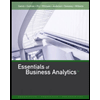
Imagine that you have been given a job as an economic advisor to evaluate a certain competitive US manufacturing industry. Your (accurate) statistical analysis indicates the market is characterized by demand of Qd = 300 – 3P and supply of Qs = 2P – 50.
> Solve for
> Depict the supply curve S1 and demand curve D1 on the usual P, Q diagram. Label all relevant intercepts (including two intercepts for the demand curve and one intercept for the supply curve). Clearly indicate and label the
> Graphically indicate the areas of
> Compute the values of Consumer Surplus (CS1) and Producer Surplus (PS1), clearly indicating the units that CS and PS are measured in.
Continuing your analysis of the competitive US manufacturing industry from Question 1, with demand of Qd = 300 – 3P and supply of Qs = 2P – 50, suppose an increase in labor costs causes the supply curve to decrease, shifting the curve up by $20 for every given quantity Q.
- Determine the new supply equation. (Hint: What approach have you used to model taxes and subsidies in previous assignments?)
- Solve for equilibrium price P2 and quantity Q2.
- Depict the original supply S1, the new supply S2, and the original demand D1 on the usual P, Q diagram. Label all intercepts (including two intercepts for the demand curve and one intercept for the supply curve). Clearly indicate and label the new market equilibrium.
- Graphically indicate the areas of Consumer Surplus (CS2) and Producer Surplus (PS2) that resulted from the new market equilibrium.
- Compute the values of Consumer Surplus (CS2) and Producer Surplus (PS2) associated with the new market equilibrium, clearly indicating the units that CS and PS are measured in.
- What was the impact of the shift in the supply on consumers and producers, based on the comparison of CS and PS in Questions 1 and 2? In other words, were each of these two groups of market participants hurt or made better off by change? Why? (Narrative response; suggested length of three to four sentences or one paragraph.)
Make sure you draw the graph manually , check the formula properly and recheck your answers...
Step by stepSolved in 2 steps with 5 images

- On a graph for a representative firm in a perfectly competitive industry, depict the three cost curves AVC, ATC, and MC (assume typical U-shaped cost curves). Now assume the market price, P, is such that it intersects the upward-sloping portion of MC above ATC. Graphically depict the short-run equilibrium q (representative firm's output) and π (representative firm's profit) under this price scenario Given the situation you graphically depicted in Question 4, please state the level of economic profits (positive, zero, negative) of this representative firm and explain why this is the case.arrow_forwardRecall the assumptions: The market for calculators is a perfectly competitive industry facing typical U-shaped ATC, AVC, and MC cost curves. Demand is linear and has a downward slope. The industry is filled with many homogeneous firms. Using a side-by-side graph that depicts both the market (on the left) and a representative firm (on the right), graphically depict what will happen to (a) P (price), (b) Q (market output), (c) q (representative firm's output), and (d) π (representative firm's profit) when the market moves from the original short run equilibrium (SRE) with positive profits you depicted in Question 1 to a new long run equilibrium (LRE).arrow_forwardThe supply and demand equations of a good are given by the following formulas P=2Qs +48 P= -6QD+ 160 Find the equilibrium price and quantity. The equilibrium quantity is. (Type an integer or a decimal.) ***arrow_forward
- a) Discuss the difference between a price-weighted index and a value-weighted index. Give one example for the price-weighted index and one example for the value-weighted index and discuss any problems/advantages associated with the specific indices. b) We assume that investors use mean-variance utility: U = E(r) – 0.5 × Ao², where E(r) is the expected return, A is the risk aversion coefficient and o? is the variance of returns. Given that the optimal proportion of the risky asset in the complete port- folio is given by the equation y* = E , where r; is the risk-free rate, E(rp) is the expected returm of the risky portfolio, o, is variance of returns, and A is the risk aversion coefficient. For each of the variables on the right side of the equation, discuss the impact of the variable's effect on y* and why the nature of the relationship makes sense intuitively. Assume the investor is risk averse. Aoarrow_forwardShow detailed steps to solve the following question. Calculate the Expected Rate, Standard Deviation, Variance and coefficient of variance. Then decide which of the following company is better for investment.arrow_forward1. Please, compute mean returns, variances and covariance among the two assets of the IBEX35 and present the vector of returns and the matrix.arrow_forward
- Question 1: A homogeneous products duopoly faces a market demand function given by Q = 10 - 2P, where Q = Q1 + Q2. Both firms have a constant marginal cost MC = 2. 1. Suppose the two firms set their quantities simultaneously by guessing the other firm's quantity choice. Derive the equation of each firm's reaction curve and then graph these curves. 2. What is the Cournot equilibrium quantity and price in this market for each firm? 3. What would the equilibrium price in this market be if it were perfectly competitive? 4. What is the Bertrand equilibrium price in this market?arrow_forwardSuppose that sending an analyst to an executive education program will raise the precision of the analyst’s forecasts as measured by R-square by .01. How might you put a dollar value on this improvement? Provide a numerical example.arrow_forwardYou have collected the following NH-NL indicator data: . If you are an technician following a momentum-based strategy, are you buying or selling today? A momentum-based trader would be selling because the NH-NL indicator indicates that new lows are now outpacing new lows, with a continuing strong upward trend. (Select from the drop-down menus.) Data table (Click on the icon here in order to copy the contents of the data table below into a spreadsheet.) Day NH-NL Indicator 1 (yesterday) 104 2 99 3 61 10 4567806 42 -18 -43 -80 -84 9 -91 -69 - ☑arrow_forward
 Essentials of Business Analytics (MindTap Course ...StatisticsISBN:9781305627734Author:Jeffrey D. Camm, James J. Cochran, Michael J. Fry, Jeffrey W. Ohlmann, David R. AndersonPublisher:Cengage Learning
Essentials of Business Analytics (MindTap Course ...StatisticsISBN:9781305627734Author:Jeffrey D. Camm, James J. Cochran, Michael J. Fry, Jeffrey W. Ohlmann, David R. AndersonPublisher:Cengage Learning Financial Reporting, Financial Statement Analysis...FinanceISBN:9781285190907Author:James M. Wahlen, Stephen P. Baginski, Mark BradshawPublisher:Cengage Learning
Financial Reporting, Financial Statement Analysis...FinanceISBN:9781285190907Author:James M. Wahlen, Stephen P. Baginski, Mark BradshawPublisher:Cengage Learning Essentials Of Business AnalyticsStatisticsISBN:9781285187273Author:Camm, Jeff.Publisher:Cengage Learning,
Essentials Of Business AnalyticsStatisticsISBN:9781285187273Author:Camm, Jeff.Publisher:Cengage Learning,


